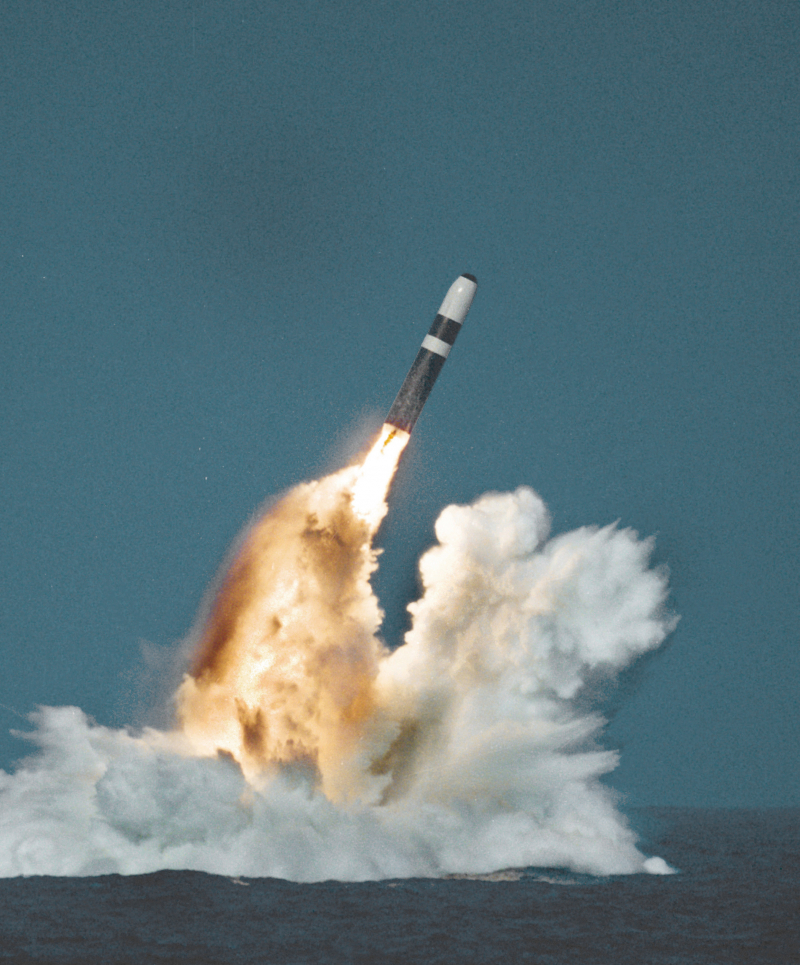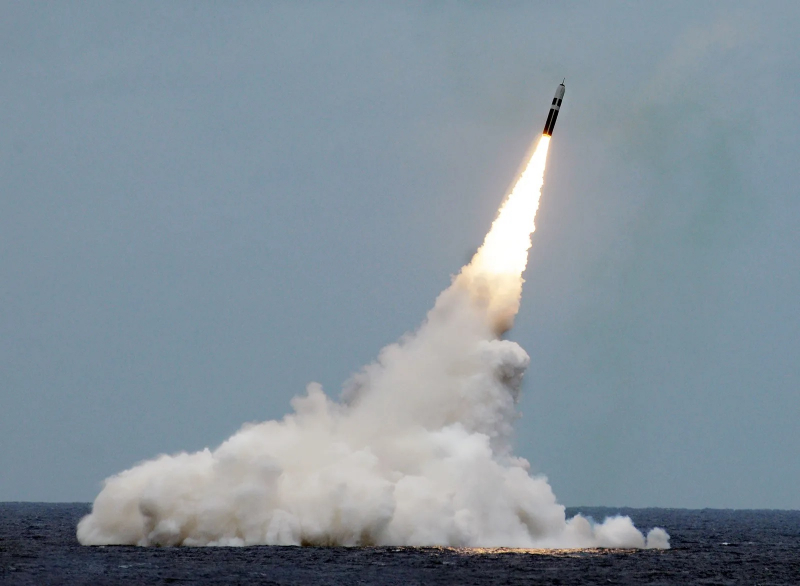UGM-133A Trident II
A submarine-launched ballistic missile (SLBM), also known as the UGM-133A Trident II, was developed by Lockheed Martin Space in Sunnyvale, California, and is used by the navy of the United States and the United Kingdom. It has been in use ever since its initial deployment in March 1990. Compared to the older Trident C-4, the Trident II Strategic Weapons System is a better SLBM with increased accuracy, payload, and range. It improves U.S. strategic deterrence and is a crucial component of the strategic nuclear triad of the United States. The Trident II is regarded as a tough sea-based system that can engage a variety of targets. With performance and payload flexibility that can support active treaty initiatives, it strengthens the U.S. position in strategic weapons negotiations (see New START). Nuclear deterrence can be carried out with fewer submarines because of the Trident II's enhanced payload, and its superb accuracy which is on par with that of land-based missiles, allows it to be deployed as a first strike weapon.
Four British Vanguard-class submarines and fourteen US Ohio class submarines each carry fourteen Trident II missiles, each with sixteen missiles (the number of missiles on Ohio-class submarines will be reduced to 20 each starting in 2023, in compliance with the New Strategic Arms Reduction Treaty). Since the D5 missile's design was finished in 1989, there have been 177 successful test launches, the most recent of which took place in February 2020 from the USS Maine (SSBN-741). Less than ten test flights have failed, with the most recent one occurring in June 2016 with HMS Vengeance off the coast of Florida. The D5 is the sixth generation of sea-based missiles to be used since the program's inception 60 years ago. Till 2042, the Trident D5LE (life-extension) variant will be in use.
It can travel up to 13,000 miles per hour and is categorized as an SLBM, which is a ballistic missile that is launched at its intended target from a submarine. Given that it is equipped with nuclear weapons, it has never been used, and, provided everything goes according to plan, it will never be deployed. A conventional variant was once suggested, but it was never implemented because the majority of sensors had significant difficulty telling a nuclear ballistic missile from a regular ballistic missile. Combined, the two navies have spent $53.2 billion on the missile system so far.
Cost: $53.2 billion
Country: United States












